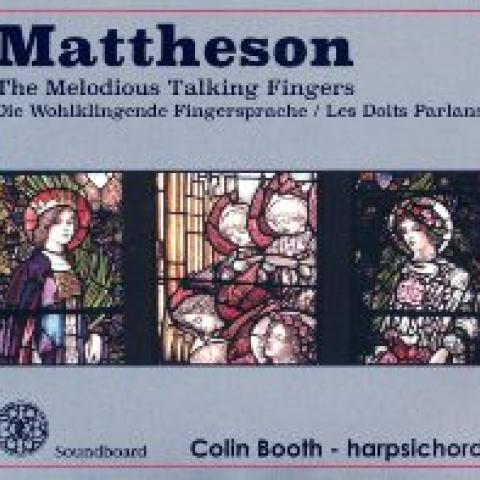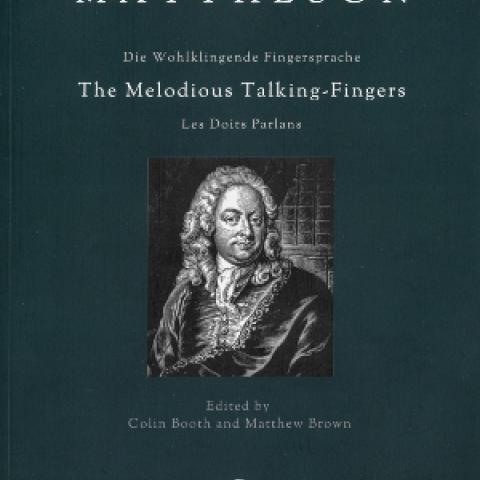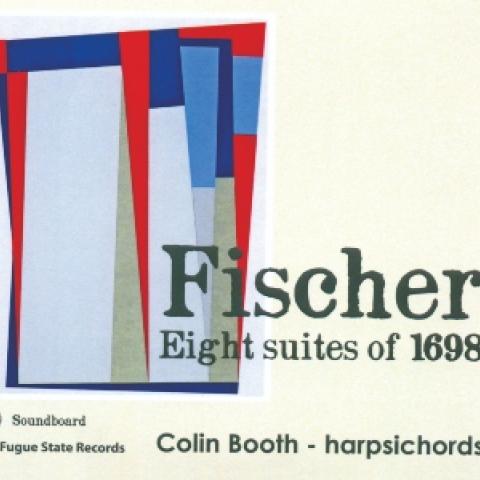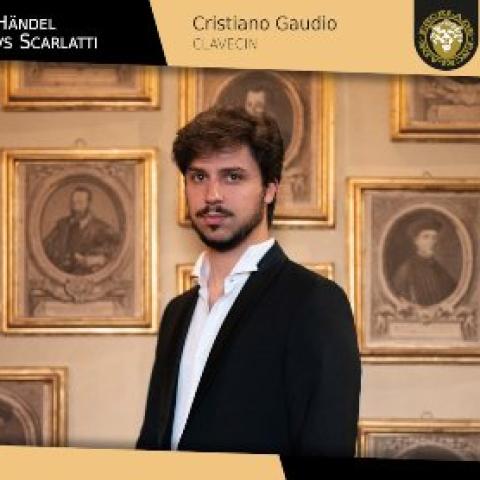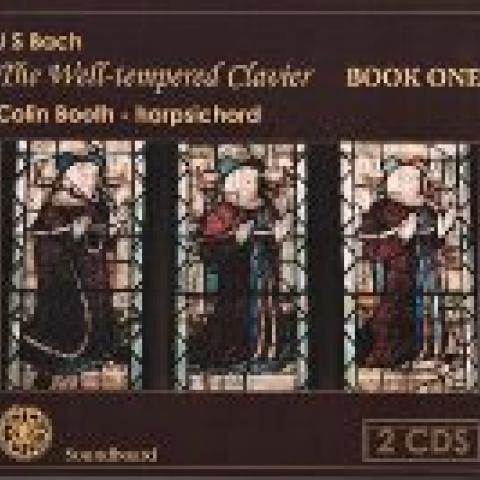
Prelude to Twilight
Dark Harpsichord Music, by Colin Booth. Soundboard, SBCD 203, 2023, $16.98. Available from
ravencd.com.
Jean-Henri D’Anglebert: Prelude in G Minor; Armand-Louis Couperin: Allemande in G Major; Johann Mattheson: Air in G Minor; Louis Couperin: Prelude in F Major; Carl Philipp Emanuel Bach: “Andante” from Sonata in F Major, W62/6; D’Anglebert: Prelude in D Minor; Johann Sebastian Bach: “Chaconne in A minor” from Violin Partita in D Minor, transcribed by Booth; François Couperin: “Prelude in A Major” from l’Art de Toucher le Clavecin; Louis Andriessen: Overture to Orpheus; Louis Couperin: Passacaille in G Minor.
This album is the replication of a program that Colin Booth presented in the Great Hall at Dartington, England, on a summer’s evening in 1995, a performance involving gradually dimmed candlelight throughout the program until only twilight remained with birdsong accompanying. With such an evocative title, one may wonder what music will unfold and how, and Mr. Booth’s compelling album invites the listener to sit with and absorb equally compelling music. As one discovers throughout this album, the moving selection of harpsichord works is never truly “dark,” i.e., without light. Rather, Booth’s own note on the Andriessen work speaks to the theme of the entire program: “exploring at length, and in a limited range of tonalities, a mood of subtly varied introspection.”
Without question the objets d’art of this album are the prelude and postlude of sounds of nature, and the improvisatory links between works complement the atmospheric approach to programming. Booth’s brief improvisatory links guide the listener through both changes of key and of nuance between the works of Mattheson and Louis Couperin, and then C. P. E. Bach, D’Anglebert, and J. S. Bach. The shortest of links is a mere five seconds and opens an unmeasured prelude in a relative minor key to the piece preceding it. The other two links are over twenty seconds and are comprised of more elaborate improvisatory material.
After an atmospheric presentation of birdsong, the first sound of the harpsichord is a D’Anglebert prélude non mesuré in G minor. Booth gently acquaints the listener with this new timbre emerging from the twilight, and his pacing is a foretaste of the sweetness to come. Armand-Louis Couperin’s “Allemande in G Major” from the 1751 Pièces de clavecin smoothly follows the D’Anglebert and graces the listener with its richness and suave character. Couperin’s exploration of the lower, richer, and indeed darker register of the harpsichord renders Booth’s selection of the work highly appropriate. A graceful “Air” from the second of Mattheson’s two suites in G minor from the 1741 publication follows. It is an ambling piece and contains a blending of French and German styles common with Mattheson’s works. Booth tastefully changes registration between a single 8′ and the lute stop. (If one listens to Booth’s other albums, one will find considerable creativity in registration.)
The grander of Louis Couperin’s two préludes non mesuré in F Major follows a brief improvisatory link, and the listener is invited to sit with a soliloquy-like statement from the pen of the first remembered Couperin. Booth’s timing in works of this genre becomes somehow predictable, especially in ornamental gestures that contain repeated notes, which come across as accents more than graceful additions to texture. In the French dance movements, one may observe a similar predictability in Booth’s inegalité, occasionally preventing one from enjoying these magnificent dances as entire structures comprising significant harmonic events and flowing passagework between them.
The linking of French claveciniste repertoire to a German Rococo sonata movement may strike the listener as odd, but the suave nature of the C. P. E. Bach “Andante” movement follows the smoothness of the Couperin prelude well. Booth’s graceful ornaments and creative fermata improvisations serve the placement of this German andante between two French claveciniste works. The subsequent D’Anglebert prelude arrests the listener with its registration and its frequently breathless pacing. The agitation Booth brings to this performance perhaps prepares the listener for the scope of the Bach “Chaconne” to come, following an appropriately solemn link. Perhaps the pièce de résistance of this album is Booth’s transcription of Bach’s monumental “Chaconne in D Minor” for solo violin, transcribed to A minor in this rendition. Booth’s performance effectively highlights the dance element to this massive work and allows the listener to follow the natural unfolding of Bach’s writing. Rather than create a virtuosic transcription à la Busoni or merely replicate the backbone of the work à la Brahms, Booth both honors and amplifies Bach’s original harmonic and motivic structure, adding material idiomatic to the harpsichord’s sound and textural capabilities while leaving the core of the work intact. Booth also utilizes his harpsichord’s registration to great effect, thus showcasing contrasting sections and highlighting the work’s structure. This is among the most engaging performances on this album and worth the lengthy listen. (Interested harpsichordists may find Booth’s transcription in the key of D minor at https://www.colinbooth.co.uk/.)
From the darkness of the chaconne’s end, a gentle glimmer of light emerges in the François Couperin “Prelude in A Major” from L’Art De Toucher Le Clavecin. Some of the Bach’s energy may have carried over into this performance, as Booth takes a little time to settle into the differing affect of the work. The only contemporary piece on the program, Overture to Orpheus, comes from the pen of Louis Andriessen, a Dutch composer recognized for his early serialism and neoclassicism, and later for his minimalism. Booth’s performance emphasizes the score’s tranquillo markings, perhaps placing the mind at ease as twilight falls. Whether the piece ponders, dances, races, or waits, it must be experienced as Andriessen himself described it, “prelude-playing.” The number of improvisation-based works on this album lead up to this one piece, which surpasses them all in length and as such must not just be listened to, but absorbed, even accepted.
The final work on the album, a gentle Passacaille in G Minor by Louis Couperin, cleanses the palate and allows the listener a final respite before a night’s rest. The sweetness of the middle G-major section in particular lifts the spirit from the darker sonorities of this album, and the final G minor seems less heavy than the solemn register of the harpsichord may indicate. The final birdsong becomes all the more meaningful. Having listened to several of Colin Booth’s albums, I can confidently state that this is my favorite so far. From start to finish, its originality engages the listener, who is transported into a mysterious twilight and beyond.

